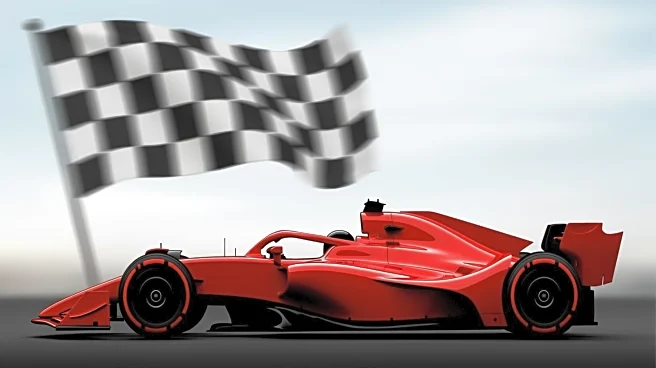What's Happening?
Red Bull Racing was fined 50,000 euros following a safety breach at the United States Grand Prix in Austin. The incident involved a team member re-entering the 'gate well' area near McLaren's Lando Norris'
grid position after the cars had pulled away for the formation lap. The stewards reported that the individual did not respond to marshals' efforts to prevent entry, leading to the fine. Red Bull stated the team member was unaware of the marshals' attempts to stop them. The fine is partially suspended pending any similar breaches for the remainder of the season. The incident has sparked debate over the use of tape on the grid wall, which McLaren used to help Norris position his car optimally.
Why It's Important?
This incident highlights the ongoing competitive dynamics between Formula 1 teams, particularly Red Bull and McLaren, amid a close drivers' championship race. The use of tape on the grid wall, while not against regulations, has raised questions about gamesmanship and fair play. The fine underscores the importance of adhering to safety protocols in high-stakes environments like Formula 1. As the championship race intensifies, such incidents could influence team strategies and driver performances, impacting the overall standings and fan engagement.
What's Next?
The Formula 1 season continues with the Mexico City Grand Prix, where teams will be under scrutiny to avoid similar breaches. The incident may prompt discussions within the FIA about clarifying rules regarding grid markers and team conduct. Teams might reassess their strategies to ensure compliance with safety regulations while maintaining competitive advantages. The ongoing championship battle between Max Verstappen, Lando Norris, and Oscar Piastri will likely see heightened tensions and strategic maneuvers as the season progresses.
Beyond the Headlines
The 'tapegate' incident reflects broader themes of sportsmanship and the fine line between strategic advantage and rule-breaking in competitive sports. It raises ethical questions about the lengths teams will go to gain an edge, potentially influencing future regulatory changes in Formula 1. The incident also highlights the psychological aspects of racing, where minor disruptions can impact driver focus and performance, illustrating the complex interplay of physical and mental challenges in motorsport.











